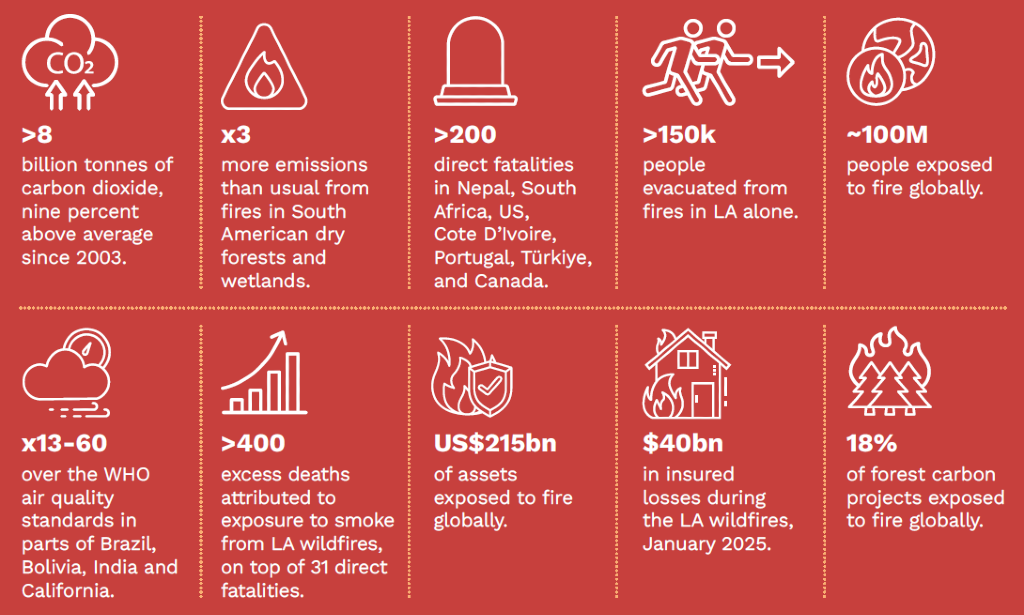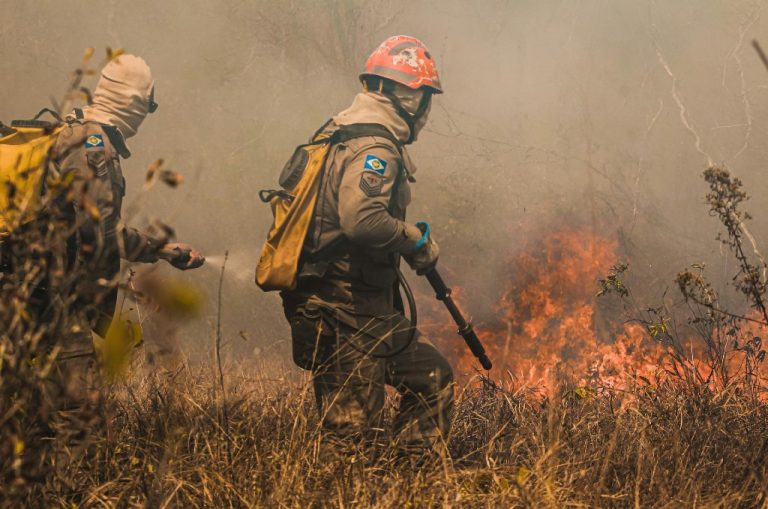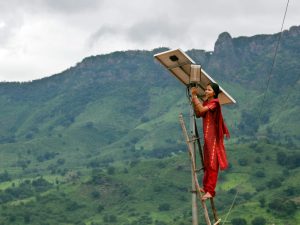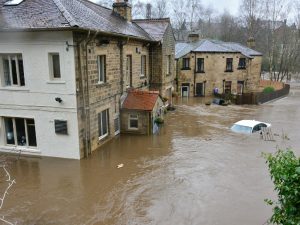Every year, the State of Wildfires report brings together the latest science on extreme fire monitoring, prediction and modelling to track how wildfire impacts are changing and to explain the drivers behind these shifts.
The State of Wildfires project aims to strengthen wildfire resilience by delivering insights on climate, land use, and fire management policy to decision-makers and practitioners. It unites world-leading experts from more than 60 institutes across 20 countries.
A core output is the State of Wildfires report, first published in 2024: a systematic, yearly review that tracks the global and regional fire activity of each annual fire season, analyses the causes of prominent extreme wildfire events, and projects the likelihood of similar events occurring in future climate scenarios.
The State of Wildfires Report: 2024-2025
The second report from the State of Wildfires project covers the March 2024 to February 2025 fire season. It examines extreme wildfire events worldwide, the drivers and predictability of those events, and the role of climate change.
The State of Wildfires report is co-led by the University of East Anglia (UEA) via Dr Matthew Jones (Senior Research Fellow at the Tyndall Centre for Climate Change Research), the UK Centre for Ecology and Hydrology (UKCEH), UK Met Office, and the European Centre for Medium-Range Weather Forecasts (ECMWF).
Human-driven climate change is fundamentally altering wildfire risks
New analyses of the March 2024 to February 2025 fire season add to the growing evidence base that warming is making extreme wildfires more likely and more severe.
Global emissions must fall rapidly, else wildfire risk will escalate for generations to come. Adaptation too, however, is necessary: we urgently needed better land and fuel management, ecosystem restoration, early warning systems, and stronger emphasis on preventative measures and community engagement.
Key findings: Unpacking the wildfire season

Source: State of Wildfires 2024-2025 report, Summary for Policymakers
- Fires emitted over 8 billion tonnes of CO2 in 2024-2025: about 10 per cent above average since 2003
- More than 100 million people were exposed to fire worldwide
- Wildfire-related air pollution spiked to between 13x and 60x above World Health Organisation (WHO) standards in Brazil, Bolivia, India, and California, creating acute and prolonged hazards to public health, including 400+ excess deaths attributed to smoke exposure in Los Angeles (LA)
- Globally, US$215 billion in physical assets were exposed to wildfires, and the LA fires were among the costliest wildfire events in history
- Drought and heatwave set the stage for four of the most prominent wildfire events
- Some of the most prominent extreme wildfire events, in LA and parts of South America, were 2 to 3 times more likely due to climate change, and the area burned by wildfires during those events was 25 to 35 times larger
- Extreme wildfire seasons that were unlikely within the lifetime of previous generations are projected to be more likely than not within the lifetime of today’s children
Previous reports
Related links







